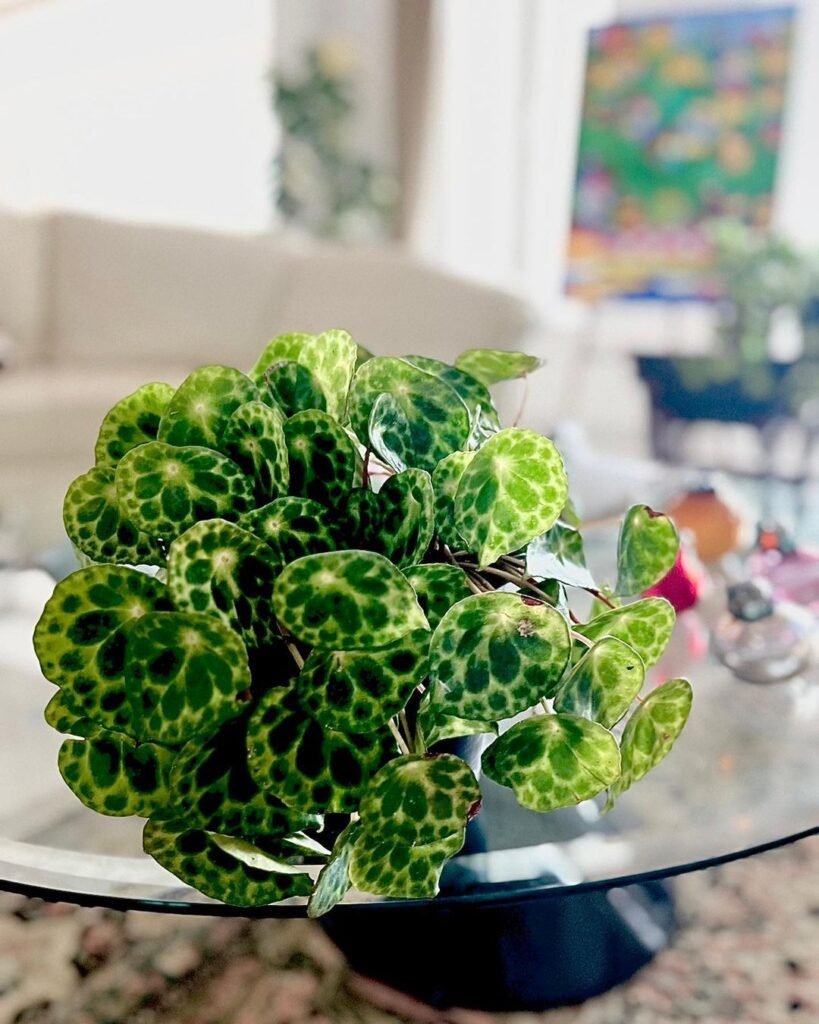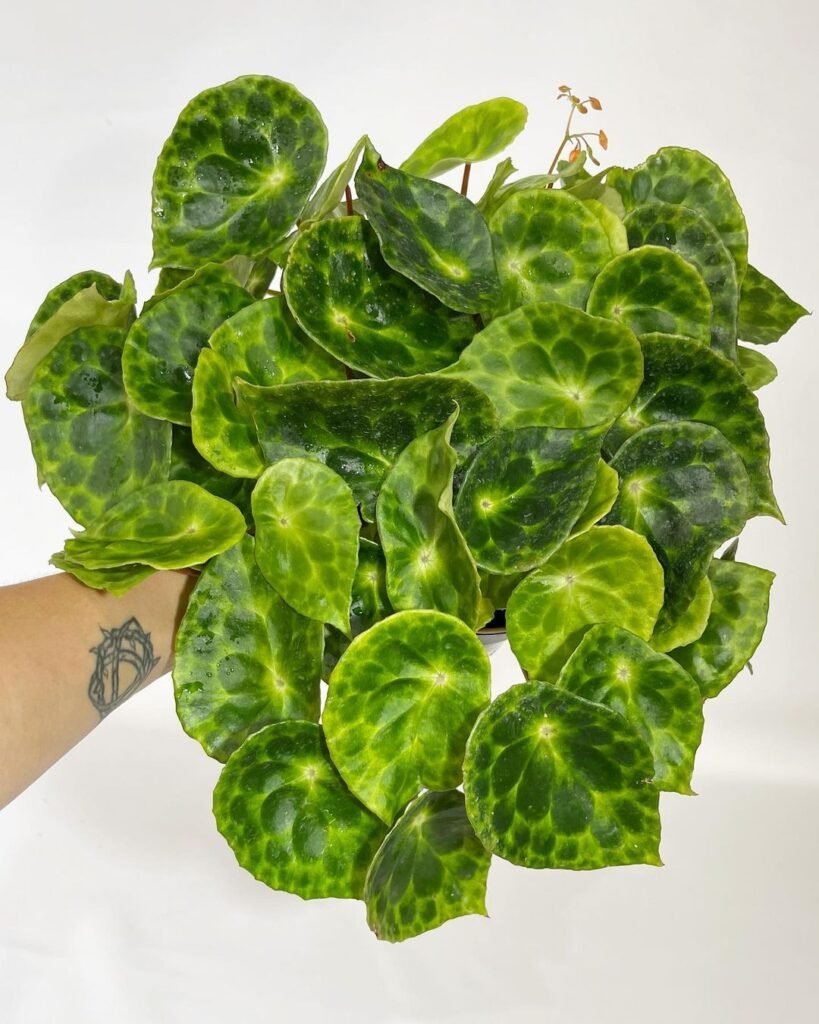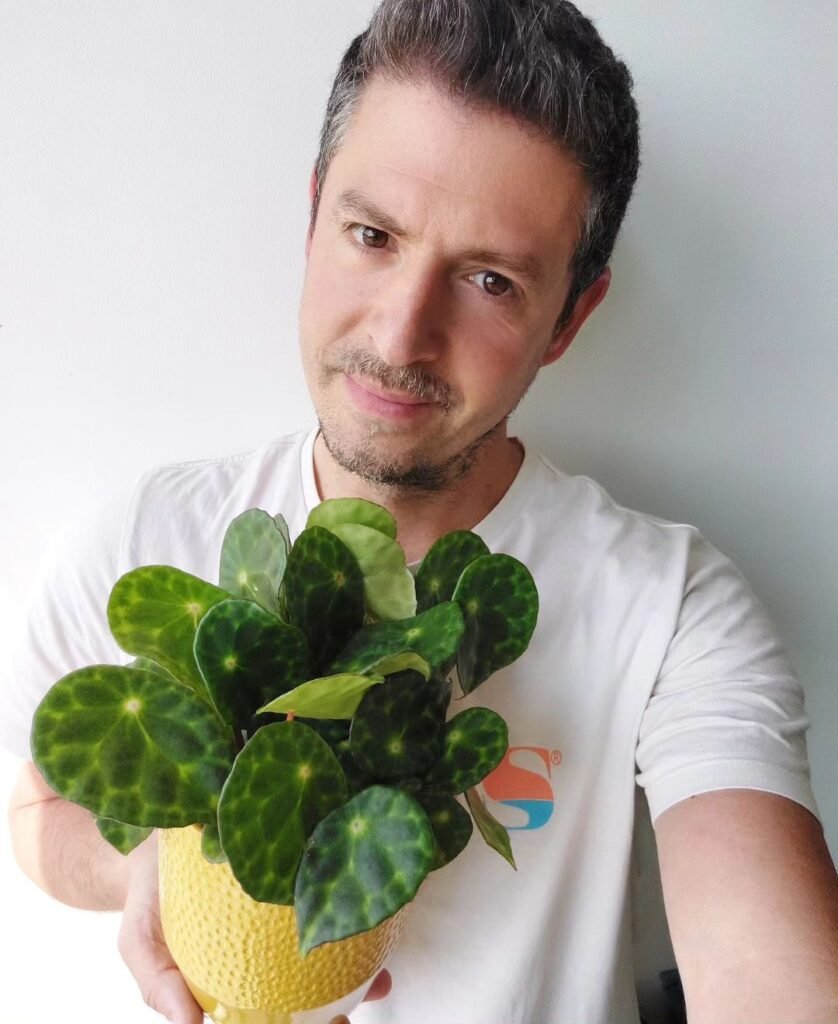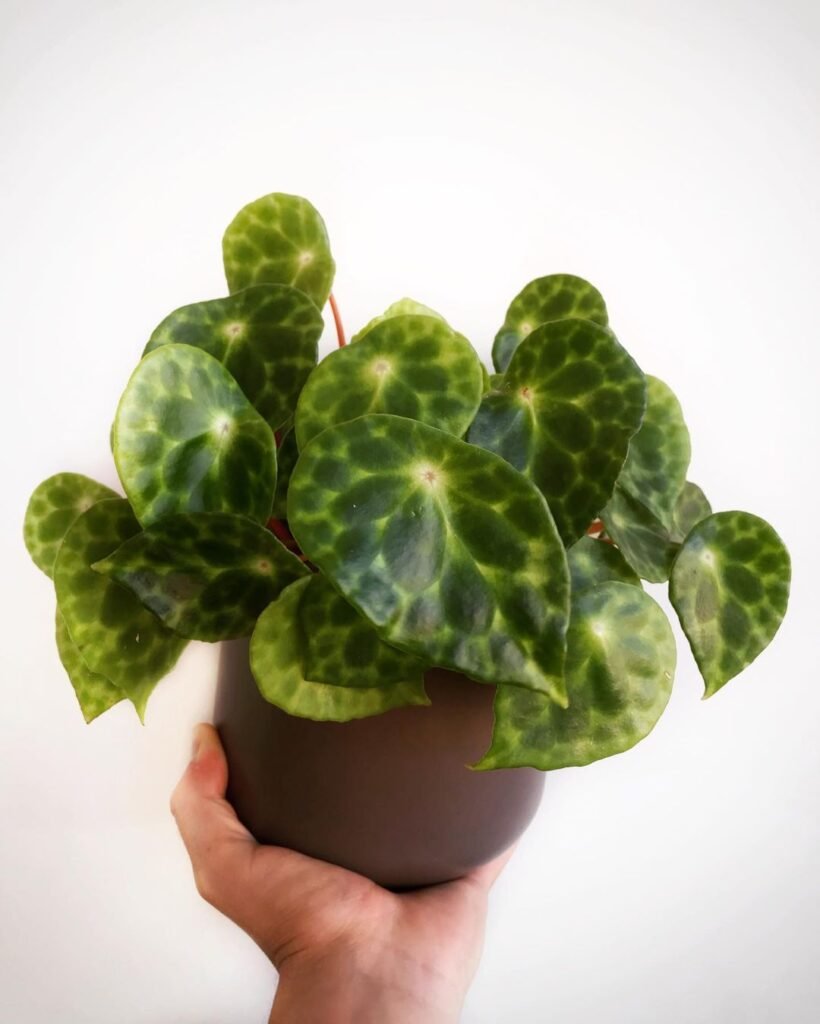Welcome to the captivating world of Begonia Kingiana – a botanical treasure that has graced my personal collection with its unique charm.
In my journey into the world of plants, few have captured my fascination quite like the exquisite Begonia Kingiana. I hope you enjoy growing yours as much as I have mine.
Key Takeaways:
- Native to the lush rainforests of Borneo, Begonia Kingiana thrives in warm and humid environments.
- Recognized for its striking silver markings on its leaves, resembling intricate patterns that nature carefully designed.
- This begonia species belongs to the revered section Petermania, making it a distinctive and sought-after addition for plant enthusiasts.
- Begonia Kingiana boasts delicate, pendulous pink flowers, creating a mesmerizing display that elevates any plant collection.
- Known for its preference for filtered sunlight, making it an ideal choice for indoor gardens and well-lit spaces.



💧 Care Guide Overview
| Care Aspect | Description |
|---|---|
| 💦 Watering | Begonia Kingiana prefers consistent moisture. Allow the top inch of soil to dry between waterings. |
| ☀️ Lighting | Thrives in filtered sunlight, mimicking its natural habitat. Avoid direct sunlight to prevent leaf scorch. |
| 🌱 Soil and Fertilizing | Utilize a well-draining potting mix and fertilize during the growing season with a balanced liquid fertilizer. |
| 💨 Humidity and Temperature | Maintain a high humidity level and provide a warm environment, ideally between 65-75°F (18-24°C). |
| ✂️ Pruning and Shaping Tips | Regularly remove dead or damaged leaves. Prune sparingly to maintain a balanced and attractive shape. |
| 🌱 Propagation Tips | Propagate through stem cuttings or leaf cuttings in a mix of perlite and peat. Keep cuttings consistently moist. |
🌿 Appearance of Begonia Kingiana



Begonia Kingiana is a botanical masterpiece, adorned with distinct features that set it apart. The leaves, characterized by their distinct silver patterns, create a captivating spectacle reminiscent of nature’s intricate artwork. The intricate markings, resembling delicate veins, add an ethereal touch to the lush foliage, making each leaf a work of living art.
In addition to its mesmerizing leaves, Begonia Kingiana boasts pendulous pink flowers that gracefully dangle, adding a touch of elegance to its overall appearance. The delicate blooms, complemented by the striking silver foliage, create a harmonious visual symphony.
Not the plant for you? Check out my full list of 78 Types of Begonia!
🌱 How to Grow Begonia Kingiana
Cultivating Begonia Kingiana demands a nuanced approach, considering the intricacies of its growth requirements. Let’s delve deeper into each aspect to unlock the secrets of nurturing this botanical beauty.
💦 Watering
Achieving the perfect watering balance for Begonia Kingiana involves more than routine moistening. Pay attention to the soil consistency—it should be consistently moist but not soggy. Consider using a self-watering pot to maintain a steady moisture level, and always use room temperature water to prevent shock.
Tip: Adjust your watering frequency based on seasonal changes and the plant’s growth phase.
☀️ Lighting
Providing optimal lighting means understanding the nuanced needs of Begonia Kingiana. Filtered sunlight is crucial, but the intensity varies. Morning sunlight is gentler and preferable, while direct afternoon sunlight can be too harsh. Consider rotating the plant periodically to ensure all sides receive adequate light.
Tip: Use sheer curtains or diffusing elements to create a light-filtering effect indoors.
🌱 Soil and Fertilizing
Creating the right soil environment involves crafting a blend that offers both drainage and nutrition. Mix a well-draining potting mix with perlite or orchid bark to enhance aeration. Fertilize during the growing season, but don’t overlook the importance of a winter rest period with reduced feeding.
Tip: Monitor soil pH and adjust your fertilizer type accordingly for a tailored nutritional approach.
💨 Humidity and Temperature
To replicate the natural habitat of Begonia Kingiana, prioritize maintaining a consistently high humidity level. This can be achieved through various methods, including grouping plants together or using a humidity tray.
As for temperature, avoid sudden fluctuations and aim for a stable range of 65-75°F (18-24°C).
Tip: During colder months, shield the plant from drafts and provide gentle bottom heat to mimic its tropical origin.
🌿 Propagation: Crafting New Beginnings



Propagation is a captivating aspect of Begonia Kingiana’s journey, offering plant enthusiasts the opportunity to create new life from established beauty. Here, we explore the art of propagating Begonia Kingiana through both stem and leaf cuttings.
Stem Cuttings:
- Select a healthy stem with at least two nodes, ensuring it’s free from pests and diseases.
- Trim the stem just below a node using sterilized pruning shears.
- Dip the cut end in rooting hormone for enhanced root development.
- Plant the cutting in a well-draining mix and maintain high humidity during rooting.
- Once roots develop, transplant the new plant into its permanent home.
Disclosure: Some of the links below are affiliate links, meaning that at no additional cost to you, I will receive a commission if you click through and make a purchase.
Leaf Cuttings:
- Choose a mature and healthy leaf, ideally with prominent veins.
- Cut the leaf into sections, each containing a portion of the main vein.
- Place the leaf sections on a moist substrate, ensuring the cut ends are in contact with the medium.
- Maintain high humidity to encourage the development of new plantlets.
- Transplant the rooted plantlets once they reach a suitable size.
Propagation of Begonia Kingiana is a rewarding endeavor that allows you to share the beauty of this begonia while expanding your plant collection.
🌺 Companion Plants Harmony: Creating a Botanical Symphony
While Begonia Kingiana is a stunning soloist in any collection, pairing it with compatible companions elevates the overall aesthetic and promotes a thriving environment. Here, we explore the art of companion planting with Begonia Kingiana.
Ferns (Nephrolepis exaltata): Ferns complement Begonia Kingiana with their feathery foliage and preference for similar humidity levels. Plant ferns as undergrowth to create a lush and layered display.
Orchids (Phalaenopsis spp.): Orchids share Begonia Kingiana’s need for filtered sunlight and well-draining media. Their elegant blooms add an extra layer of beauty to the botanical ensemble.
Fittonia (Fittonia spp.): Known for their vibrant and patterned leaves, Fittonia plants bring a burst of color that harmonizes with Begonia Kingiana’s silver markings. Plant them as ground cover for a visually striking combination.
Companion planting with Begonia Kingiana not only enhances the aesthetic appeal but also creates a microenvironment that benefits the overall well-being of your botanical companions.
🌱 Understanding Dormancy: Nurturing Rest for Vitality



Begonia Kingiana, like many plants, experiences a period of dormancy that is crucial for its long-term health and vitality. Understanding and appropriately managing this phase is key to fostering a resilient and flourishing begonia.
Dormancy Signals:
- Reduced Growth: During dormancy, expect a noticeable slowdown in growth. This is a natural response to the plant conserving energy.
- Leaf Shedding: Shedding of older leaves is common. This process allows the begonia to redirect resources to essential areas.
- Change in Water Needs: As growth slows, adjust your watering routine. Allow the soil to dry out slightly between waterings, preventing waterlogged conditions.
Care During Dormancy:
- Reduced Watering: Scale back on watering frequency but ensure the soil doesn’t completely dry out. Aim for a balance to prevent dehydration.
- Limited Fertilization: Minimize or completely halt fertilization during dormancy. The plant’s reduced metabolic activity requires fewer nutrients.
- Stable Temperature: Maintain a stable temperature within the preferred range of 65-75°F (18-24°C). Avoid sudden fluctuations that can disrupt dormancy.
| Aspect | Dormancy Care Guidelines |
|---|---|
| Watering | Allow soil to slightly dry between waterings; reduce overall frequency. |
| Fertilization | Minimize or suspend fertilization to match the plant’s slowed activity. |
| Temperature | Keep a stable temperature within the preferred range during dormancy. |
Understanding and respecting Begonia Kingiana’s dormancy period ensures that the plant undergoes a rejuvenating rest, ready to burst forth with vitality when the growing season returns.
🌿 Health Check: Detecting and Addressing Common Issues
Keeping your Begonia Kingiana vibrant and thriving involves vigilant monitoring for potential challenges. Identifying and addressing issues promptly is crucial to maintaining the plant’s overall health.
Common Issues:
- Overwatering: Yellowing leaves and a foul smell indicate overwatering. Adjust your watering routine and ensure proper drainage.
- Underwatering: Wilting and dry soil are signs of underwatering. Increase watering frequency and monitor soil moisture levels.
- Pest Infestations: Yellow spots or distorted leaves may signal pest issues. Use neem oil or insecticidal soap as a natural remedy.
- Leaf Scorch: Brown, crispy leaf edges are indicative of leaf scorch. Adjust the plant’s lighting conditions to prevent further damage.
Issue Detection Tips:
- Regular Inspection: Routinely inspect leaves, stems, and the soil surface for any signs of abnormalities.
- Leaf Health Check: Healthy leaves are firm and vibrant. Yellowing, browning, or distorted leaves may indicate underlying issues.
Taking a proactive approach to Begonia Kingiana’s health involves regular check-ups and swift intervention to address any challenges that may arise.
🌿 Colors in Bloom
The blossoming phase of Begonia Kingiana is a breathtaking spectacle, with vibrant colors and intricate blooms stealing the spotlight. Understanding the nuances of this flowering period and providing tailored care ensures a harmonious and prolonged display of nature’s artistry.
Flowering Characteristics:
- Blooming Time: Begonia Kingiana typically produces its delicate pink flowers during the growing season, with the peak bloom occurring in late spring to early summer.
- Flower Structure: The begonia’s flowers are characterized by their pendulous nature, delicately hanging from slender stems. The pink hue, complemented by the silver-flecked foliage, creates an enchanting contrast.
Care Tips for Blooming:
- Pruning Strategy: Encourage continuous blooming by selectively pruning spent flowers. This redirects the plant’s energy towards new flower bud development, ensuring an extended flowering period.
Enhancing Bloom Duration:
- Balanced Nutrition: During the growing season, provide a balanced liquid fertilizer to support robust flower production.
- Filtered Sunlight: Ensure the plant receives adequate filtered sunlight to stimulate flowering. Avoid harsh, direct sunlight to prevent stress.
Witnessing Begonia Kingiana in full bloom is a testament to successful care and a reward for your efforts in creating an environment that encourages its captivating floral display.
🌱 The Art of Container Gardening
Elevate your Begonia Kingiana cultivation experience by exploring the world of container gardening. This versatile approach not only enhances the aesthetic appeal but also provides practical benefits for the care and maintenance of this unique begonia.
Container Selection:
- Drainage is Key: Opt for containers with ample drainage holes to prevent waterlogging, ensuring the begonia’s roots stay healthy.
- Size Matters: Choose a container that accommodates the current size of the begonia, allowing room for growth without being excessively large.
Potting Mix and Fertilization:
- Specialized Mix: Utilize a well-draining potting mix enriched with perlite or orchid bark to promote optimal aeration for the begonia’s roots.
- Controlled Nutrition: Incorporate a slow-release fertilizer into the potting mix for a steady and controlled nutrient supply.
Placement and Mobility:
- Strategic Placement: Position the container in an area with filtered sunlight, mirroring the begonia’s natural habitat.
- Seasonal Mobility: In regions with fluctuating temperatures, consider moving the container indoors during colder months to protect the begonia from frost.
Care Tip for Container Gardening:
- Elevate on Risers: Raise the container slightly off the ground using risers or pot feet. This enhances drainage and prevents water from pooling beneath the container.
Embark on a container gardening journey with Begonia Kingiana, adding a dynamic dimension to your botanical haven while ensuring optimal care and growth.
🌿 Exploring Varieties: A Tapestry of Diversity
Dive into the diverse world of Begonia Kingiana varieties, where each cultivar adds a unique brushstroke to the canvas of botanical beauty. While the species itself is a captivating wonder, exploring these varieties unveils an array of colors, patterns, and growth habits.
Table: Begonia Kingiana Varieties
| Variety | Distinct Features |
|---|---|
| Begonia Kingiana ‘Silver Wings’ | Silver-flecked foliage with a pronounced metallic sheen. |
| Begonia Kingiana ‘Pink Elegance’ | Intense pink flowers with a cascading and graceful growth habit. |
| Begonia Kingiana ‘Lunar Glow’ | Variegated leaves featuring silver markings in crescent shapes. |
| Begonia Kingiana ‘Royal Velvet’ | Velvety-textured leaves with a deep, regal purple undertone. |
Exploring these varieties not only adds visual interest to your collection but also allows you to tailor your Begonia Kingiana display to your unique botanical preferences.
🌱 Seasonal Care Calendar for Begonia Kingiana: A Year-Round Guide
Nurturing Begonia Kingiana requires a thoughtful approach that adapts to the changing seasons. This seasonal care calendar serves as your guide, outlining specific care tasks tailored to each phase of the year, ensuring a thriving and resilient begonia.
Table: Seasonal Care Calendar
| Season | Care Tasks |
|---|---|
| Spring | – Resume regular fertilization. |
| – Monitor for pests and address promptly. | |
| Summer | – Ensure adequate shading during intense midday sunlight. |
| – Adjust watering frequency based on increased heat. | |
| Fall | – Gradually reduce fertilization as growth slows. |
| – Prepare for dormancy by moderating watering. | |
| Winter | – Scale back watering further during dormancy. |
| – Protect from drafts and provide stable indoor conditions. |
Following this seasonal care calendar ensures that your Begonia Kingiana receives tailored care throughout the year, promoting health, resilience, and a continuous display of its botanical wonders.
🌿 Begonia Kingiana: Decoding Leaf Patterns and Their Botanical Language
Unlock the visual language of Begonia Kingiana’s leaf patterns, a silent communication that reveals the plant’s health, growth, and response to its environment. By observing these intricate markings, you gain valuable insights into your begonia’s well-being.
Silver Veins and Patterns:
- Bold and Delicate Veins: The silver patterns on Begonia Kingiana’s leaves often form bold, contrasting veins. This not only adds to the plant’s aesthetics but also serves a functional purpose by enhancing structural integrity.
- Varied Markings: Each leaf may showcase unique silver markings, creating a personalized tapestry. These variations can be influenced by genetics, age, and environmental factors.
Leaf Changes and Health Signals:
- Leaf Color Shifts: Changes in the intensity of silver markings can signal changes in the plant’s health. A vibrant and pronounced silver hue often indicates a healthy and thriving begonia.
- Leaf Edges and Health: Careful observation of the edges of the leaves can reveal information about the plant’s overall health. Crisp and well-defined edges suggest optimal care, while irregularities may indicate underlying issues.
By delving into the botanical language embedded in Begonia Kingiana’s leaves, you establish a unique channel of communication with your plant, fostering a deeper understanding of its needs and responses.
🌱 Begonia Kingiana: A Symbiotic Dance with Beneficial Microorganisms
Beneath the soil surface, a hidden dance unfolds as Begonia Kingiana engages in a symbiotic relationship with beneficial microorganisms. These tiny allies contribute to the plant’s well-being, enhancing nutrient availability and promoting overall soil health.
Mycorrhizal Associations:
- Mycorrhizal Fungi Partnerships: Beneath the soil, mycorrhizal fungi form partnerships with Begonia Kingiana’s roots. These fungi extend the plant’s reach, helping it access nutrients like phosphorus and enhancing water absorption.
- Nutrient Exchange: In return, the begonia provides the fungi with carbohydrates produced through photosynthesis. This nutrient exchange creates a harmonious cycle that supports both plant and microorganism.
Beneficial Bacteria:
- Rhizobacteria Dynamics: Beneficial rhizobacteria inhabit the root zone, contributing to disease suppression and nutrient cycling. They act as a protective shield, warding off harmful pathogens and promoting a healthy root environment.
Understanding and fostering these symbiotic relationships underscore the importance of soil health in Begonia Kingiana’s overall well-being. By nurturing a thriving underground ecosystem, you create the conditions for a flourishing and resilient begonia.
🌿 Conclusion
As we conclude this exploration into the enchanting world of Begonia Kingiana, it becomes evident that caring for this botanical wonder goes beyond routine tasks. It’s a journey of understanding, observation, and adaptation—a symbiotic relationship between the caretaker and the cared-for.
Begonia Kingiana’s allure lies not just in its captivating appearance but in its ability to communicate its needs through subtle botanical cues. From the intricate dance of silver patterns on its leaves to the delicate pendulous blooms, each aspect tells a story of health, vitality, and response to its environment.
By incorporating the insights shared in this comprehensive guide, you embark on a journey of cultivating not just a plant but a living masterpiece. The careful balance of moisture, light, nutrients, and environmental conditions unlocks the true potential of Begonia Kingiana, transforming it into a thriving expression of nature’s beauty.
If you’re thinking of extending your begonia family, I recommend considering either begonia julau or begonia manaus. They both would make great additions to your squad!
May your journey with Begonia Kingiana be filled with joy, discovery, and the gratification that comes from nurturing a living work of art.
🌱 FAQs
Is Begonia Kingiana suitable for beginners?
Begonia Kingiana, while requiring attention to its specific needs, can be suitable for beginners. Start with understanding its care requirements and gradually build your expertise in cultivating this begonia.
How often should I water Begonia Kingiana?
Water Begonia Kingiana when the top inch of the soil feels slightly dry. Adjust the frequency based on environmental factors, such as humidity levels and seasonal changes.
Can Begonia Kingiana tolerate direct sunlight?
Begonia Kingiana prefers filtered sunlight and can be sensitive to direct sunlight. Shield it from intense midday sun to prevent leaf scorch.
What should I do during Begonia Kingiana’s dormancy?
During dormancy, reduce watering frequency, limit fertilization, and maintain stable temperatures. Prepare the plant for a restful period before the growing season resumes.
How can I encourage blooming in Begonia Kingiana?
To encourage blooming, provide balanced nutrition during the growing season, prune spent flowers regularly, and ensure the plant receives filtered sunlight.
Are there specific varieties of Begonia Kingiana?
Yes, there are various varieties of Begonia Kingiana, each offering distinct features such as unique leaf patterns, flower colors, and growth habits.
Can Begonia Kingiana be grown in containers?
Yes, Begonia Kingiana can thrive in containers. Select a well-draining potting mix, choose a container with drainage holes, and consider seasonal mobility for optimal care.
What is the ideal humidity level for Begonia Kingiana?
Begonia Kingiana thrives in high humidity levels. Use humidity trays, misting, or place the plant in naturally humid locations to create an environment conducive to its growth.

Writer/Green Thumb/Explorer – Rooted deep in the rich soils of Devon, I’ve cultivated a vast expertise in plant care, helping greenery thrive in homes across the UK. When I’m not crafting detailed plant care guides, I’m journeying through the lush landscapes of the West Country, unearthing nature’s secrets and sharing them with fellow plant enthusiasts. Every leaf has a story, and I’m here to tell it.






